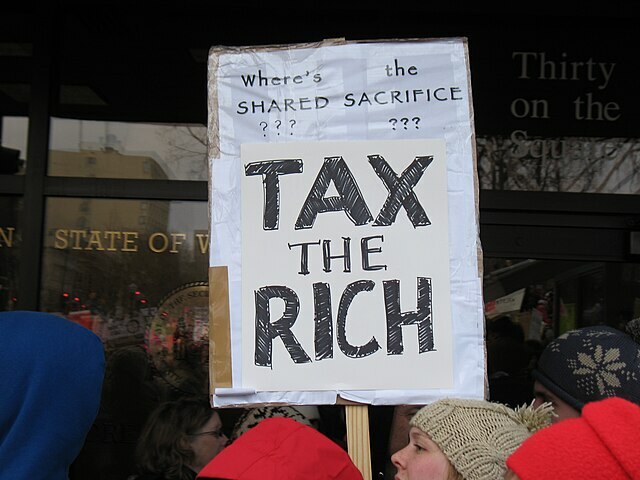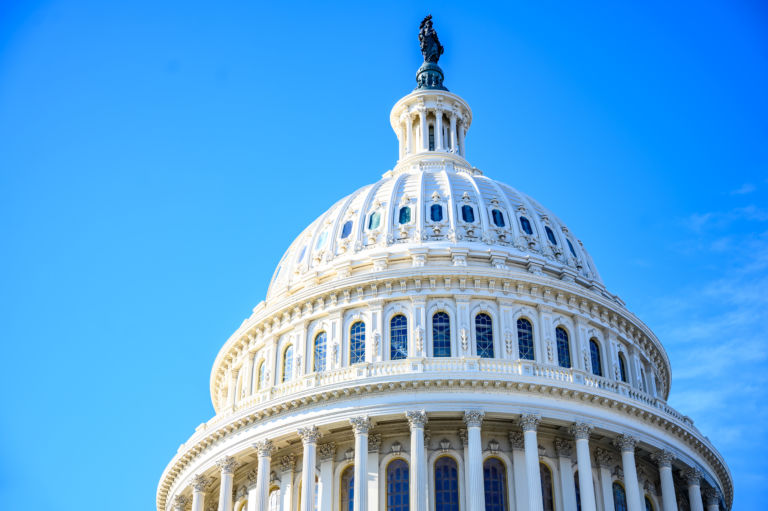- Top income earners pay the overwhelming share of state income taxes, so of course any tax cut plan will result in “the rich” receiving a larger dollar amount reduction in taxes
- Basic calculations show that the Senate’s tax cut plan would provide larger percentage reductions in the tax bills of lower- and middle-class households compared with those of higher earners
- Insisting that “the rich” should pay a higher share of their income in taxes because “they can afford it” is based on faulty and uneconomic reasoning
An oft-repeated anecdote features a bank robber named Willie Sutton who, in response to the question of why he robs banks, replied: “Because that’s where the money is.”
A similar response could be leveled at critics of the Senate’s tax cut plan who object because the largest share of the tax cuts – in dollar terms – would go to “the rich.”
Why would the rich see a larger dollar amount reduction in their taxes from the tax cut? Because that’s where the tax dollars are.
The latest data from the North Carolina Office of State Controller’s 2020 Comprehensive Annual Report (CAFR) are instructive.
Based on 2018 state individual income tax returns (the latest data available), the top 10.8% of income earners ($100K and up filers) paid 56.4% of the state’s income taxes. That amounts to roughly 520,000 filers paying nearly $7 billion in taxes (which averages out to nearly $13,500 per filer).
Conversely, the bottom 57.2% of filers ($25K and under filers) paid 8.4% of state income taxes. That’s more than 2.7 million filers paying just over $1 billion in taxes (which averages out to just over $400 per filer).
In total dollar terms, the top 10.8% of filers paid nearly seven times in tax dollars than the bottom 57.2% of filers. The average tax bill of the top 10.8% was roughly 33 times that of the bottom 57.2%.
So when progressives claim that the lowest 20 percent of taxpayers would see “zero percent of the benefit,” it’s because they largely already pay no state income tax. Per the CAFR, the bottom 46% of filers paid just 3.6% of state income tax revenue. From there, it’s easy to extrapolate that the bottom 20 percent’s share would be close to zero.
Moreover, as I wrote previously: “Tax reforms over the past decade tripled the standard deduction, and as of 2019 ‘More than 1.5 million working families in North Carolina owe no income tax on their earnings,’ according to an April 2019 release from House Speaker Tim Moore’s office.”
In a recent Carolina Journal article, Mitch Kokai crunched the numbers to show that under the Senate tax plan, high-income households would see a much smaller percentage decrease in their tax bills compared with middle- and lower-income households.
So why do leftists continue to oppose tax cut plans that would proportionately benefit middle- and lower-income households more than higher income households?
Put simply, their argument boils down to: “The rich should pay more because they can afford it.” Any tax cut that would bestow any tax relief to “the rich” will garner their scorn.
Commonly referred to as the “ability-to-pay principle,” this soak-the-rich mantra has become a cannon of “tax justice” for the left.
But the ability-to-pay doctrine falls short of providing a logical or ethical justification for progressive tax rates, for multiple reasons.
Murray Rothbard expertly laid out these reasons in his 1970 book “Power and Market: Government and the Economy”.
For starters, the ability-to-pay doctrine fails to consider an individual’s accumulated wealth — a factor that clearly affects a person’s ability to pay taxes. “A man earning $5,000 during a certain year probably has more ability to pay than a neighbor earning the same amount if he [the first man] also has $50,000 in the bank while his neighbor has nothing,” wrote Rothbard.
Thus, using income alone as the metric to gauge one’s ability to pay becomes ambiguous and does not provide a sure guide on the concept.
Moreover, an individual’s financial obligations, such as medical bills and other debt commitments, surely impair one’s ability to pay a hefty tax bill, but this too is not taken into account on the progressive’s beloved progressive income tax schedule.
Finally, the ability-to-pay doctrine fails because it harms society by more sharply penalizing the most productive. Those who prove most capable in serving the needs of their fellow man (at least in a free market economy) by efficiently creating goods and services that others value are those who will fall into the highest progressive income tax brackets. “Penalizing ability in production and service diminishes the supply of the service – and in proportion to the extent of that ability,” declared Rothbard. The result will be greater impoverishment, felt most heavily by the low-skilled and low-income people who are always hardest hit by a stagnant economy.
In spite of the protests from self-styled advocates of “tax fairness,” the ability-to-pay principle fails to provide a logical or ethical argument in favor of progressive income taxes. As Rothbard concluded, “Rather than being an evident rule of justice, the ‘ability to pay’ principle resembles more the highwayman’s principle of taking where the taking is good.”


